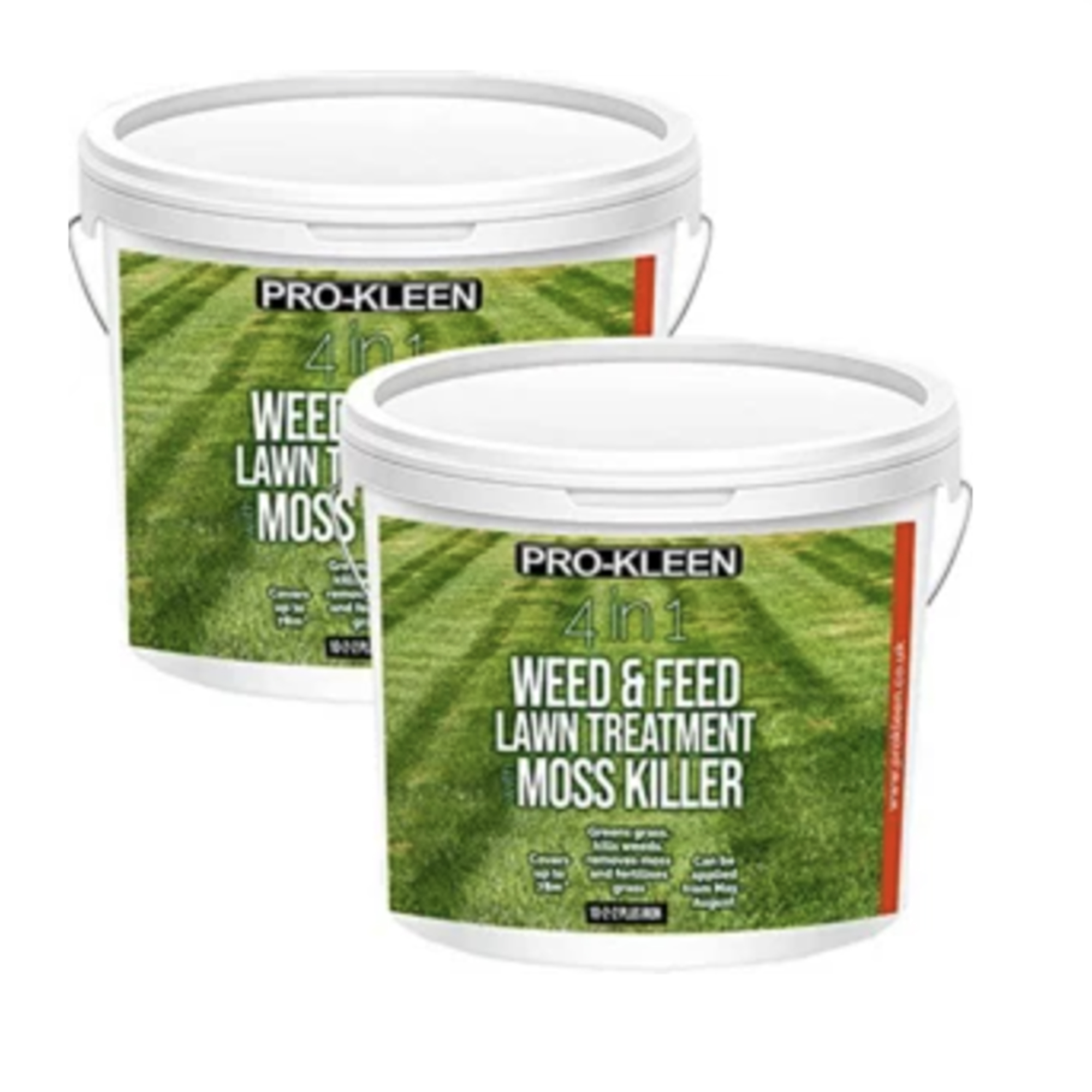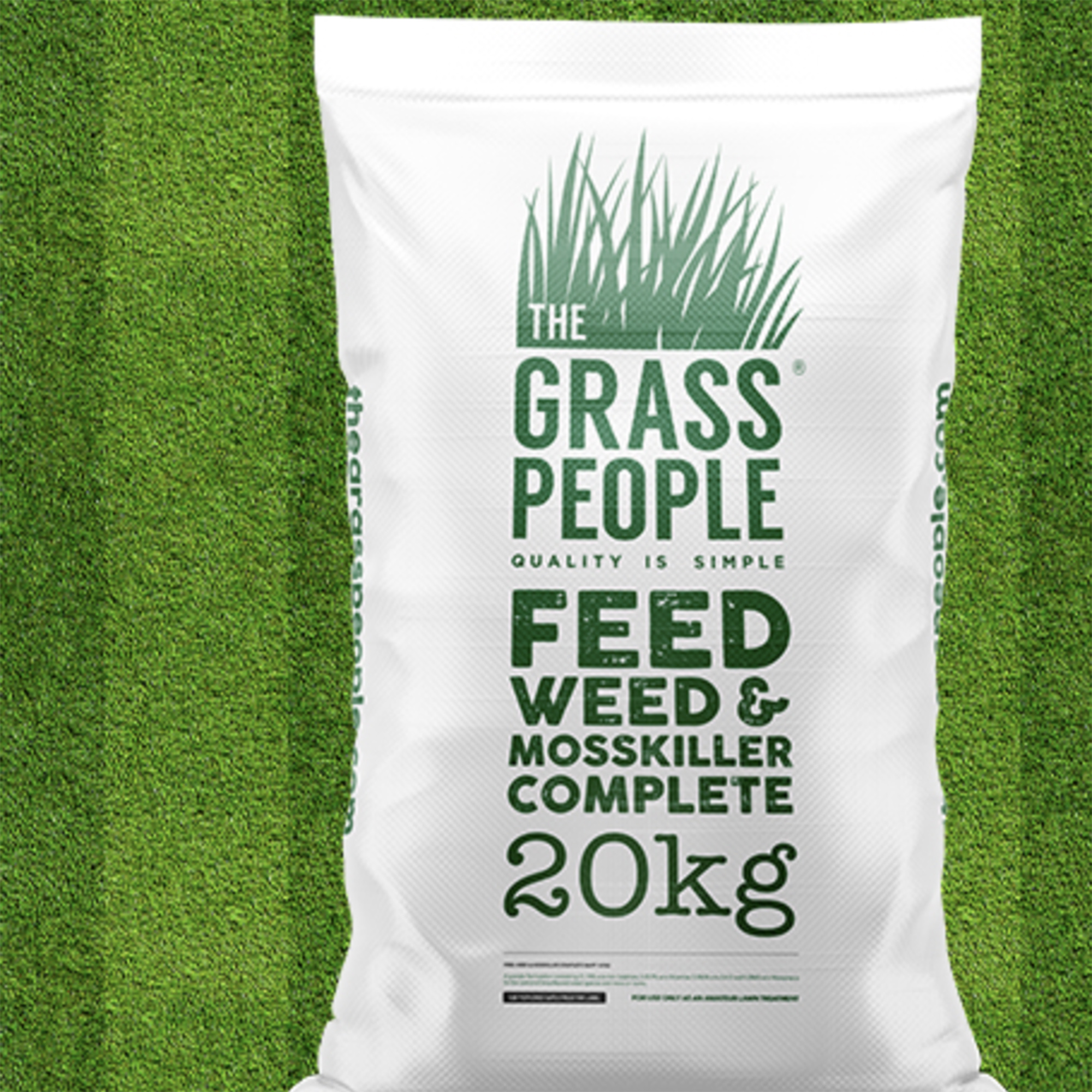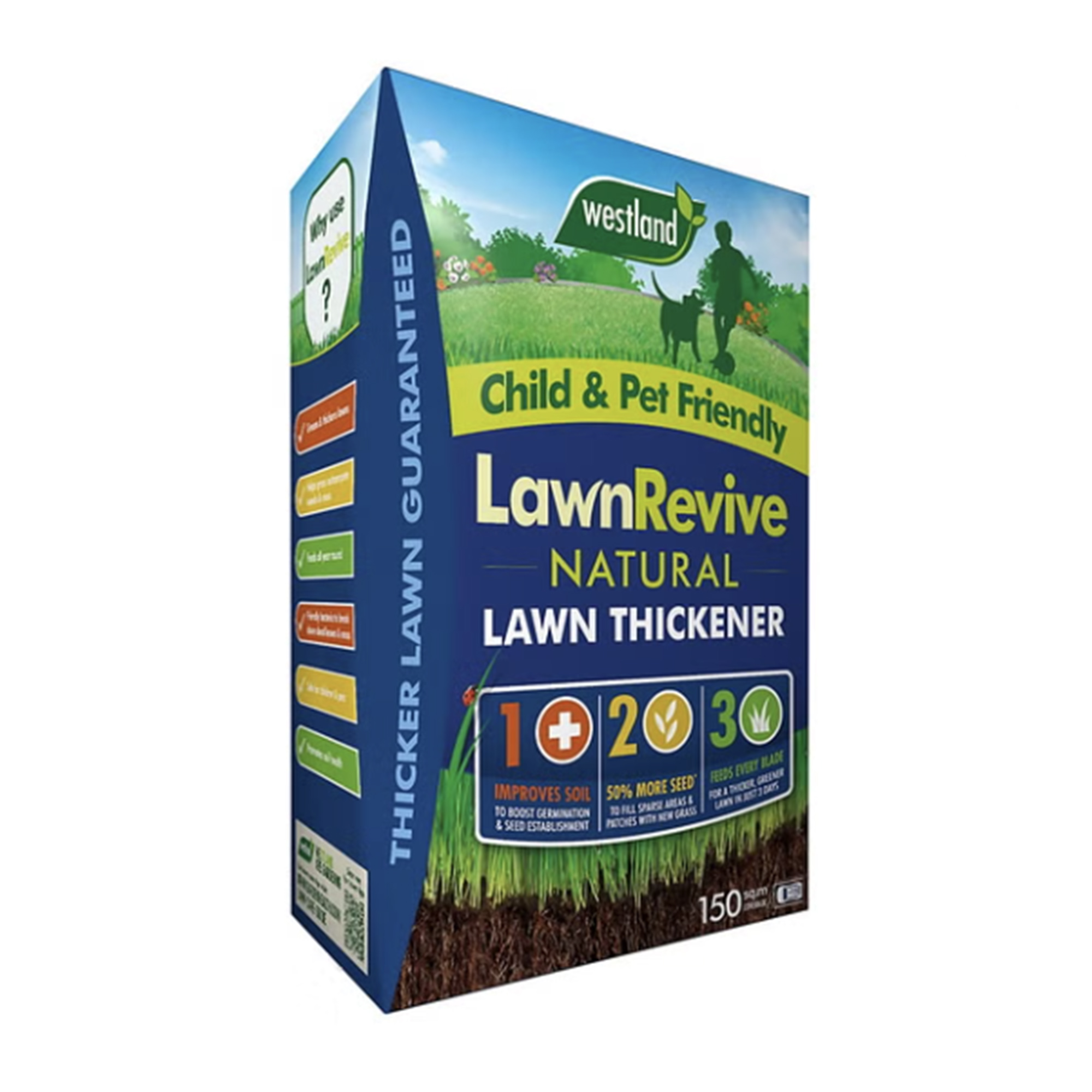Should you weed and feed your lawn? Experts explain whether or not to use this method
Is this time-saving product a sensible choice for your lawn health?
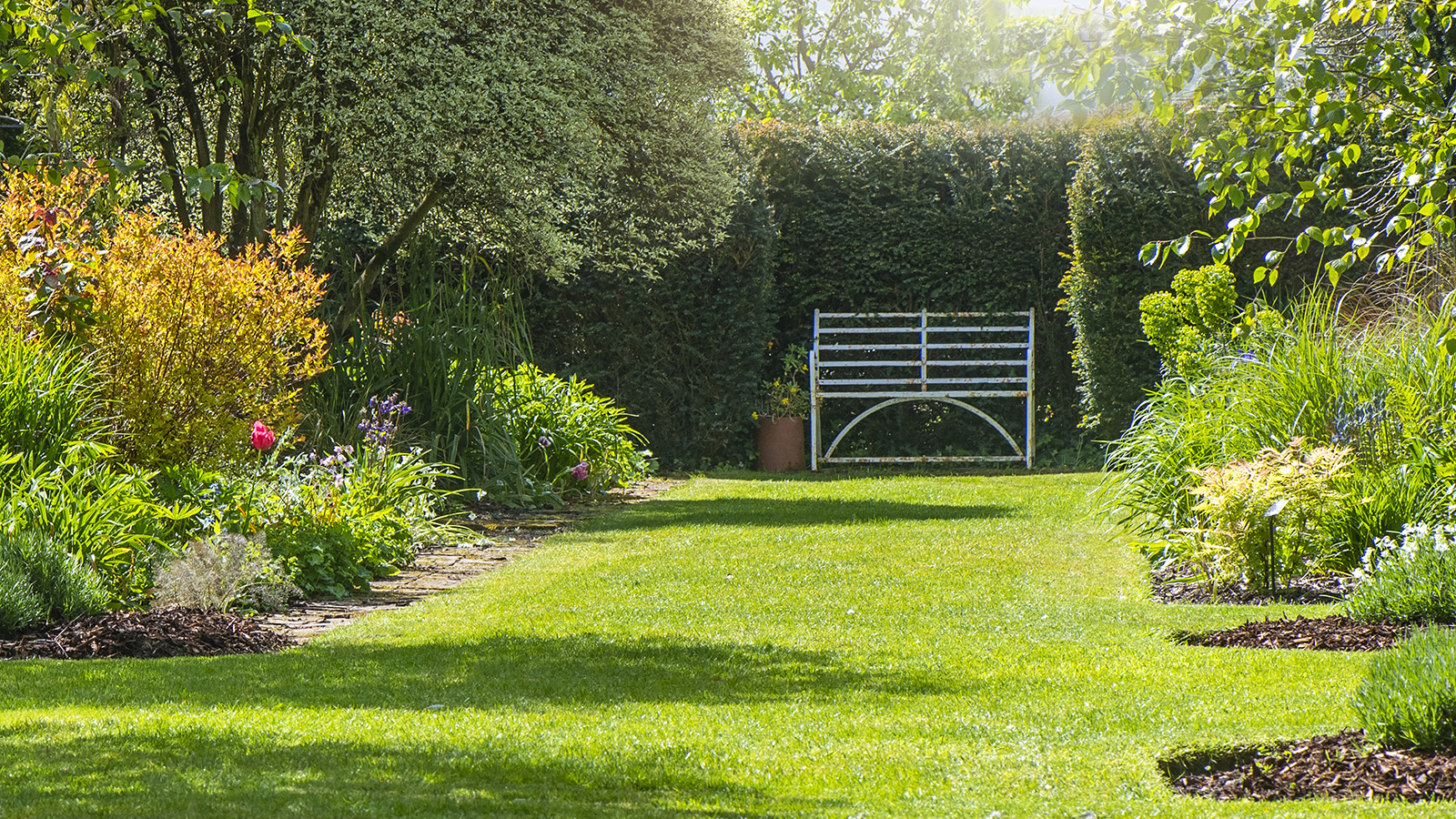
Weed and feed is a term used to describe a combination weed killer and lawn feed product. The idea of combining these two lawn jobs is of course to save time and effort.
However there are a few factors to be aware of before going down this route with your lawn. There are some lawn experts who believe that weeding and feeding in tandem reduces the effectiveness of each task, and also that products like this can harm the health of your lawn ideas over time.
In addition to this there are environmental implications that you should be aware of before using weed and feed products.
What is weed and feed?
In short, combined weed and feed treatments are designed to save you time in the garden by tackling several jobs at once.
These products contain chemicals that kill weeds such as clover, dandelions and daisies without harming the grass. They also contain a fertiliser to boost grass growth.
You might also find that some products contain a third component that will help to kill moss in a lawn. If applied correctly, you can often see results within a week.
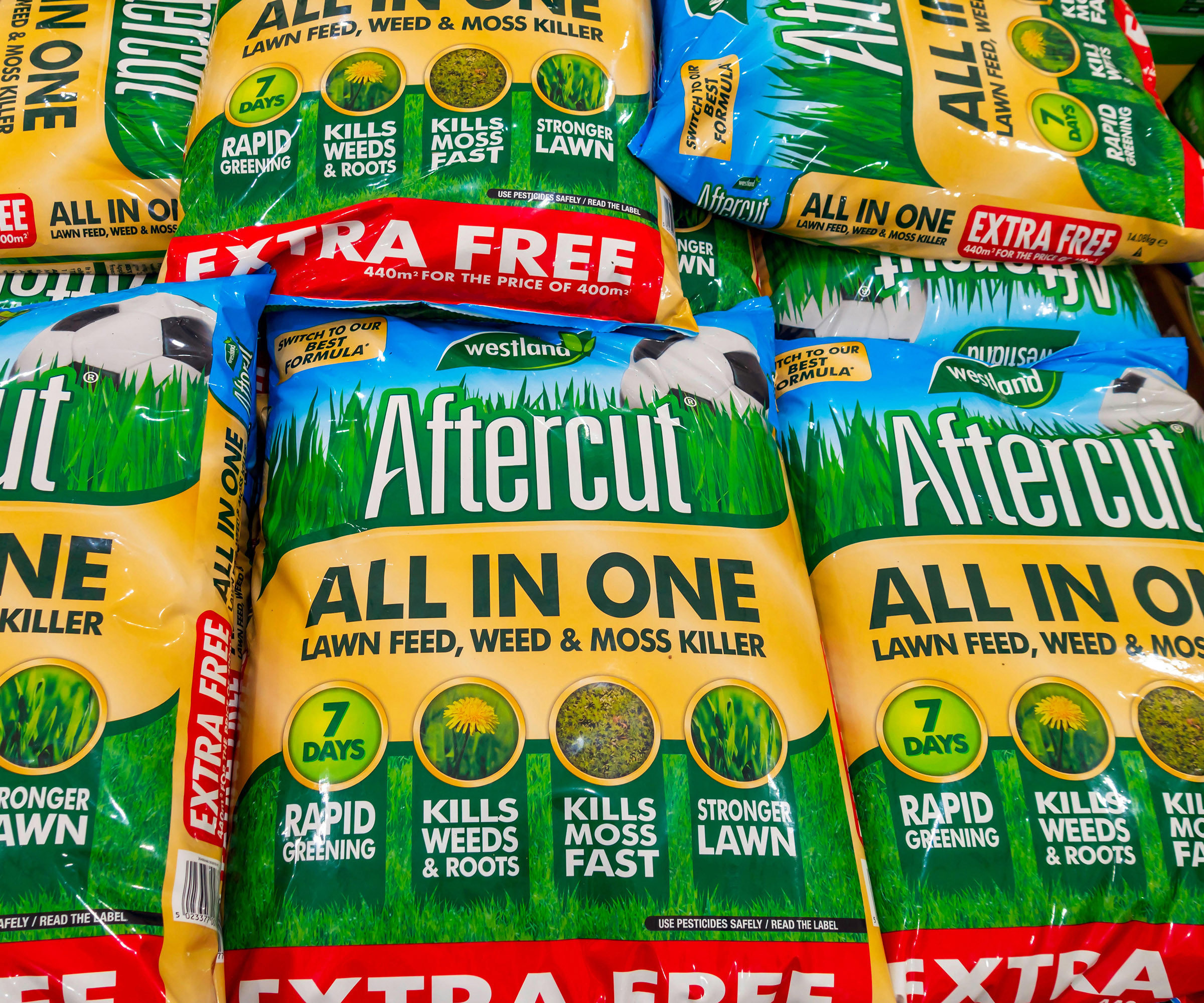
Shop weed and feed products
How to apply weed and feed to your lawn
If you decide that weed and feed is for you then it's important to apply it correctly, and be sure you follow the instructions on the packet, so you don’t overfeed your lawn.
Make sure that you are always wearing gloves to protect your hands – as is the case when handling any chemical treatments for your garden.
Bring your dream home to life with expert advice, how to guides and design inspiration. Sign up for our newsletter and get two free tickets to a Homebuilding & Renovating Show near you.
- To get the best results, time your lawn mowing with the best cordless lawn mower or best petrol lawn mower carefully. It’s best to leave your lawn to grow for a few days before using weed and feed. This gives the product more surface area to stick to.
- For best results choose a dry day when the soil is still moist but there’s no rain forecast imminently.
- If the weather is warm, it’s best to weed and feed during the morning, while the temperatures are cooler. This ensures that the product sinks in rather than evaporates.
- Starting at one edge of the lawn, walk slowly up and down the garden in parallel lines tipping the treatment from the box as you go so that the grass is evenly covered. Keep it away from flowerbeds, paths and ponds.
- If there isn't any rain within the next couple of days, you will need to water the treatment into the lawn using a hose or sprinkler.
- You’ll need to check the instructions on the packet for when you should mow afterwards, but it’s usually best to wait until about three days later. This ensures the weed killer has chance to work.
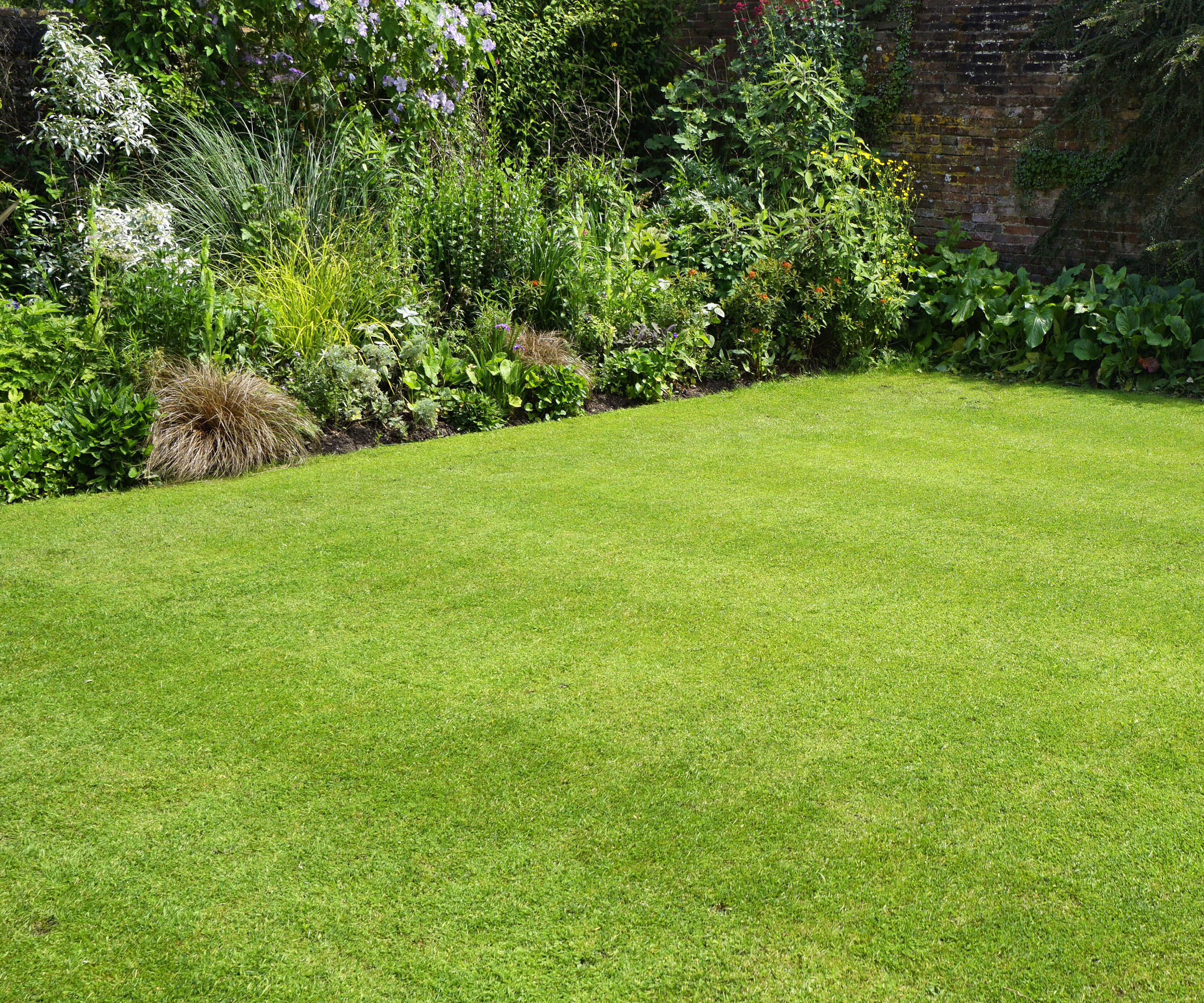
The disadvantages of weed and feed
There are a number of disadvantages to using weed and feed products in our garden landscaping ideas, from their negative environmental impact to being less effective than other methods.

- Harms habitats: Keep weed and feed treatment away from ponds as it can be harmful to wildlife if it gets into the water.
- Toxic to pets: You'll find that many weed and feed solutions are toxic to animals, so keep pets off your lawn when you have done this treatment until it has been well watered in.
- Keep children off the lawn: It's best to stop children playing on the lawn until the product has been well watered in, too.
- No mulching: Bin lawn clippings from the first cut after treatment, and compost the next two – don’t use as a mulch.
- Weakens your lawn: "In the long run, overusing and relying on weed and feed products can cause a cycle of dependency. Using these products too much can cause weed resistance and soil imbalances," says lawn care expert at Allan's Gardens Jane Dobbs.
- Won't always work: "Some formulations aren't suitable for certain types of grass or require specific applications, so it's important to choose the right product. You can't always trust weed and feed products to work on all weeds," says Jane.
- Reduced effectiveness: "With all gardening tasks, timing is everything, and the best time to feed is rarely the best time to weed. It's the perfect time to fertilise in April, but weeds like clover don't fully appear until late May, so applying weed killer with your feed in April misses most of the weeds, adds unnecessary chemicals to the ground and wastes money. You can't also seed because most products suggest a two-month gap between use and planting," says Jane.

Responsible for leading the gardening team at Allan's Gardeners, a landscaping and garden maintenance, business who do lawn care and installation. She has 10 years experience as a gardener.
FAQs
Does lawn weed and feed work?
Lawn expert and Chair of the Lawn Association David Hedges Gower is staunchly opposed to using weed and feed products, believing them to be ineffective and bad environmentally.
"If you have two contradicting products in one granule (i.e. weed and feed), it will often mean you’ll be getting about 50% effectiveness from each," says David.
"Firstly, your herbicide will be a weakened version, meaning it won't kill or harm many weeds. This is because all pesticides have an application rate when sprayed correctly. When that’s done on through a feed and weed, the herbicide is sprayed onto that granule, meaning you don't know what rate you apply at," says David.
David suggests that weeding and feeding the lawn is more effective when done separately. "To feed a lawn, use a dedicated feed such as Truegrass. Food for the lawn and the soils," says David.
Before turning to weed killers try to kill weeds naturally removing unwanted weeds by hand. "Should the need ever come for herbicides, then spot treat individual weeds using a spray for best effectiveness," says David.

David is one of the UK's leading lawn experts, with over 30 years' experience in the industry. He is Chairman of the Lawn Association, an educational platform for homeowners and professionals, and founded the world's first lawn care qualification.
When should I put weed and feed on my lawn in the UK?
The best time to apply weed and feed treatment is between May and August when weeds and grass are growing, and it’s not frosty.
You can apply it a second time within one growing season if you feel that's necessary to get improved results, but it's best to leave a minimum of six weeks between each application.
A great way to get your lawn looking smart as well as healthy is to try some new lawn edging ideas to create clean lines around your grass areas.
EDITOR’S NOTE: An earlier version of this article included a quote from a purported expert whose credentials we have not been able to verify. The quote has been removed. We regret this lapse in our verification process and have updated our internal protocols to reduce the risk of recurrence.

Teresa was part of a team that launched Easy Gardens in 2018 and worked as the Editor on this magazine. She has extensive experience writing and editing content on gardens and landscaping on brands such as Homes & Gardens, Country Homes & Interiors and Living Etc magazine. She has developed close working relationships with top landscape architects and leading industry experts, and has been exposed to an array of rich content and expertise.
In 2020 Teresa bought her first home. She and her partner worked alongside architects and builders to transform the downstairs area of her two bedroom Victorian house in north London into a usable space for her family. Along the way she learned the stresses, woes and joys of home renovation, and is now looking to her next project, landscaping the back garden.
